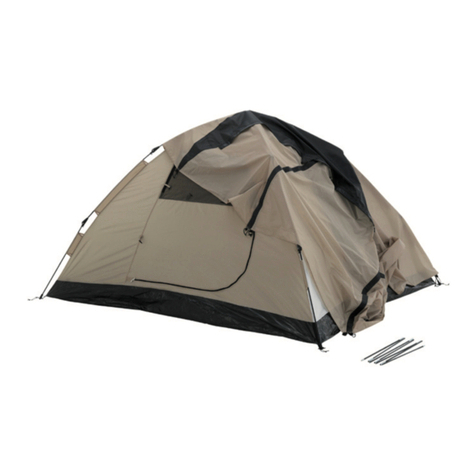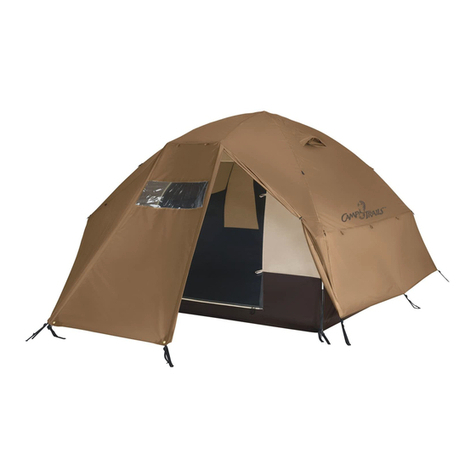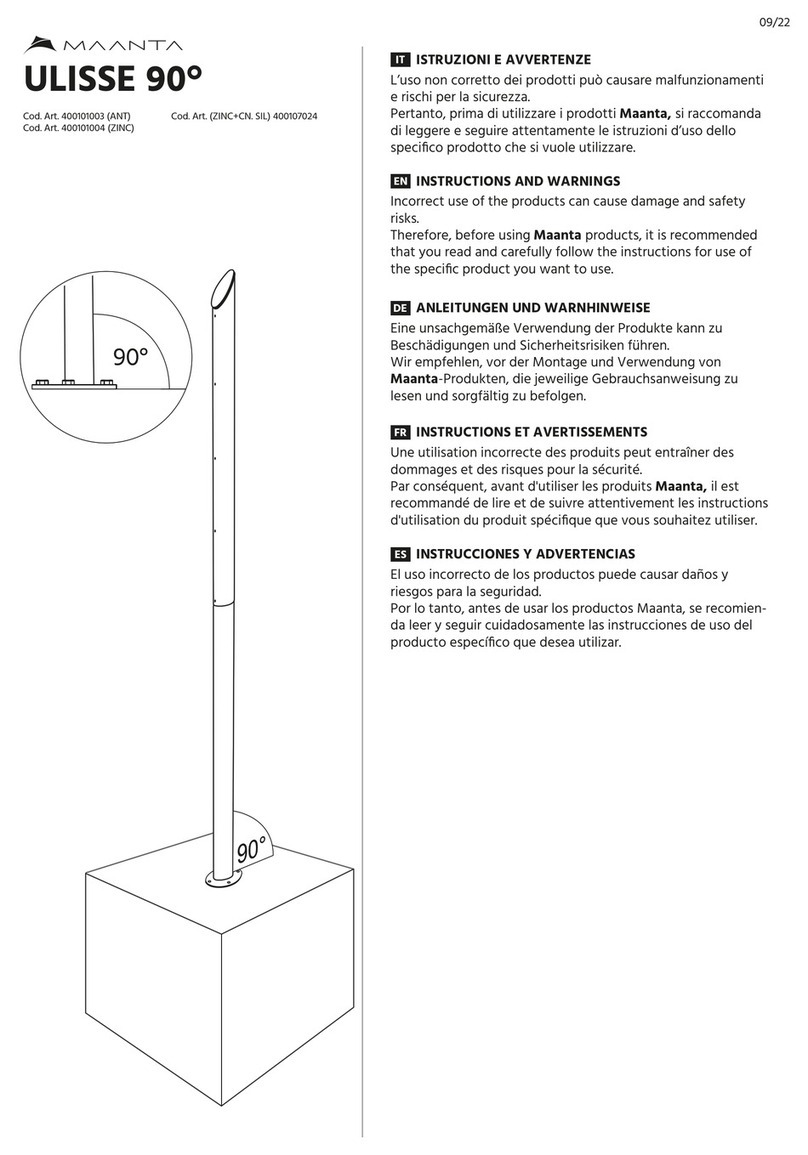2
5. Open all external valves.
6. Carefully fold canvas into body of trailer as deflation takes place.
7. Ensure all canvas is inside the body of the trailer and folded neatly with no obstructions.
8. Ensure 12V system is turned off.
9. (If applicable) Disconnect all LED lights from the sockets, this will prevent the sockets and/or AIR
OPUS®from getting damaged during the pack down process.
10. Refer to Owner’s Handbook for all following steps. Page 26.
WEATHERING/FABRIC
Your AIR OPUS®Tent has been manufactured using a polyester/cotton fabric. Before a polyester/
cotton canvas is used for the first time, it is important that the tent is weathered. Inflate the AIR
tent following the inflation instructions when rain is expected. When the cotton becomes wet for
the first time, the weave of the cotton will close. There is no predetermined time for weathering so
please do not be surprised/concerned if there is a small amount of leakage through the canvas and
seams the first few times it rains.
Your AIR OPUS®Tent is made from the best available materials. On first examination, you may find
some slight variances in colour, thick threads, pigment stains and changes due to the weather and
then environment. These are all normal and will not affect the performance of the product and are
not faults or errors.
When your AIR OPUS®is not inflated, the window material may pick up some impressions from zips,
tape, seams etc. This is quite normal and some of these impressions will disappear over time but
some may remain. This is not a fault.
Please ensure your AIR tent is only packed away when completely dry. A wet/damp canvas will
develop mildew/mould very quickly and damage your canvas permanently.
The inside and outside of your AIR tent can be cleaned but only with fresh clean water and a damp
cloth. UNDER NO CIRCUMSTANCES MUST DETERGENTS OR CHEMICAL CLEANERS be used as these
will damage your tent.
You may also experience, depending on the weather and use, condensation. This should not be
confused with leakage. To reduce the risks of condensation, please ensure your AIR OPUS®is
adequately ventilated. Please note that under certain conditions, all tents will suffer from internal
condensation depending on atmospheric conditions, the weather, the amount of moisture in the air/
ground, evening and night time temperatures etc. Condensation can be quite severe causing a film
of water on the inside of your tent (roof and sides) which may drip onto items in your AIR OPUS®
and in severe conditions can leave puddles of water.
Zips should be treated with care, use two hands when closing and opening and do not step on them
during set up or take down. Never force a zip. If a zip opening is tight it is more than likely due to
the fact that your awning is not pitched correctly. Candle wax may be used to help a zip run more
smoothly.
Please remember that your AIR tent is a temporary structure made from natural fibres. Please note
that in fibre products used in outdoor applications, product life may be low because of attack from
UV or acid rain. Discolouration of the fabric may be an early indication that your tent has been
attacked. To limit damage by UV, where ever possible, please site your AIR OPUS®in a shaded area
avoiding direct sunlight. Please be aware that continuous exposure is a more serious problem than
intermittent exposure, since UV attack is dependent on the extent and degree of exposure. Fabrics



























